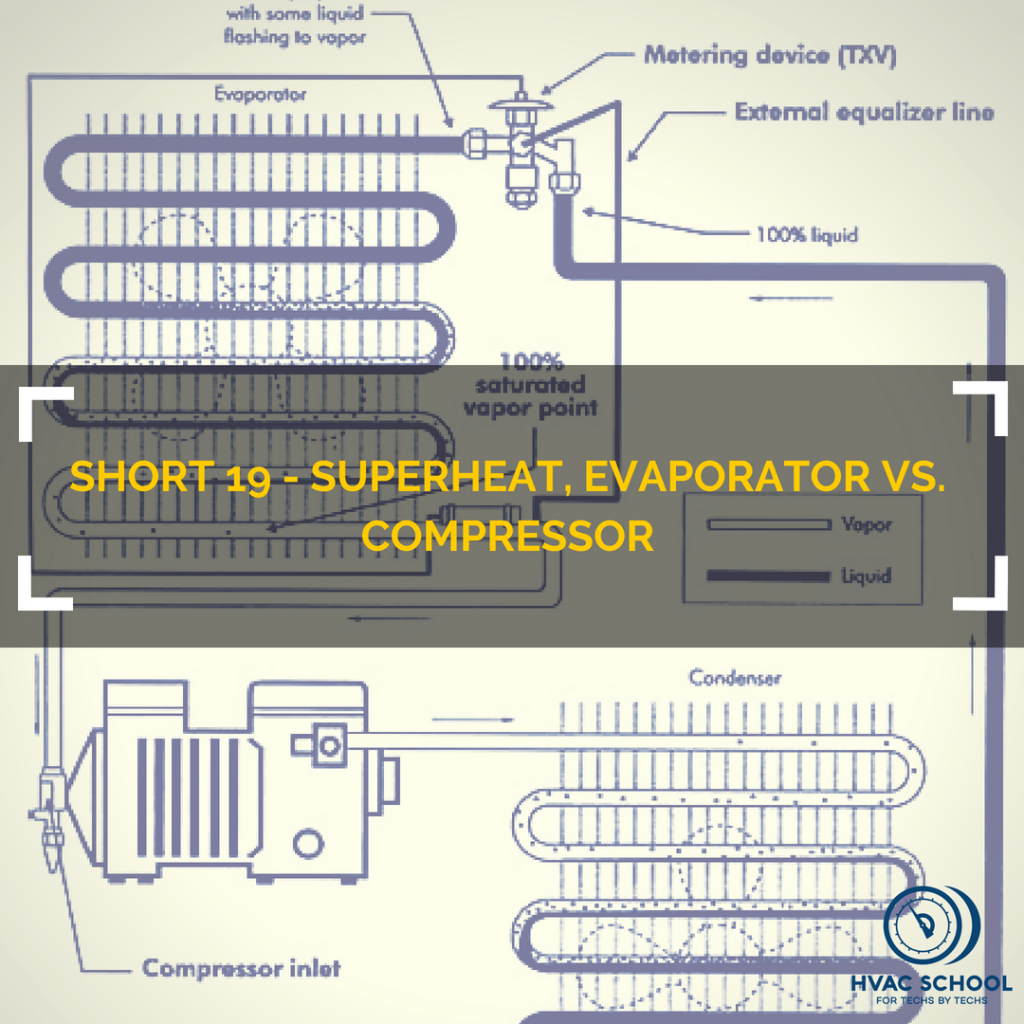Short 19 – Superheat, Evaporator vs. Compressor (Podcast)

In today's podcast, we cover why both compressor and evaporator superheat matter. We also address some common confusion related to each.
Evaporator and compressor superheat are two different readings that give you different indicators about the system's health. When you look at evaporator superheat, you see how far you feed boiling refrigerant into the evaporator coil. You don't want to overfeed your evaporator coil and risk flooding your compressor. However, you also don't want to starve your unit and reduce suction pressure. You'll want to stay between 5 and 14 degrees (F) of superheat at the evaporator outlet on typical A/C systems.
On TXV systems, we can control superheat at the evaporator outlet. Evaporator superheat is the reading that helps you optimize your capacity. Increasing it will decrease your evaporator capacity, as the evaporator coil won't be fed as much refrigerant. The lowest possible value is your best bet for maximizing efficiency and capacity.
Compressor superheat can be measured before the compressor. When you know that value, you can predict how hot your compressor will be when it runs. The temperature can increase from the evaporator outlet to the compressor inlet. Poor insulation in close proximity to the liquid line can be a cause; heat can transfer from the warm liquid line to the cool suction line. Our goal is to minimize heat gain in the suction line, so we want to insulate our suction lines and keep them as short as possible. However, you don't want the compressor superheat to be so low that you end up flooding the compressor.
In most cases, you should check both values to evaluate the heat gains or losses in your suction line.
Learn more about Refrigeration Technologies HERE.
Author:









Comments
To leave a comment, you need to log in.
Log In